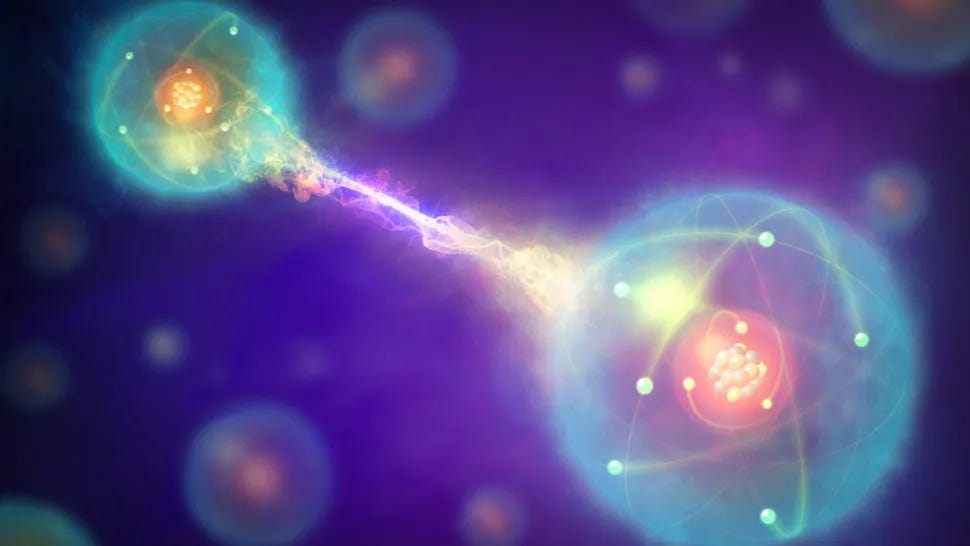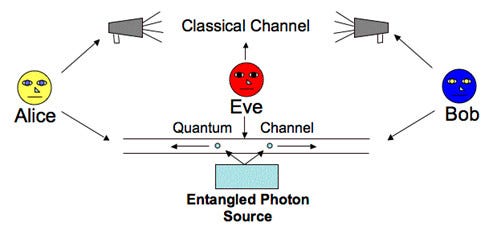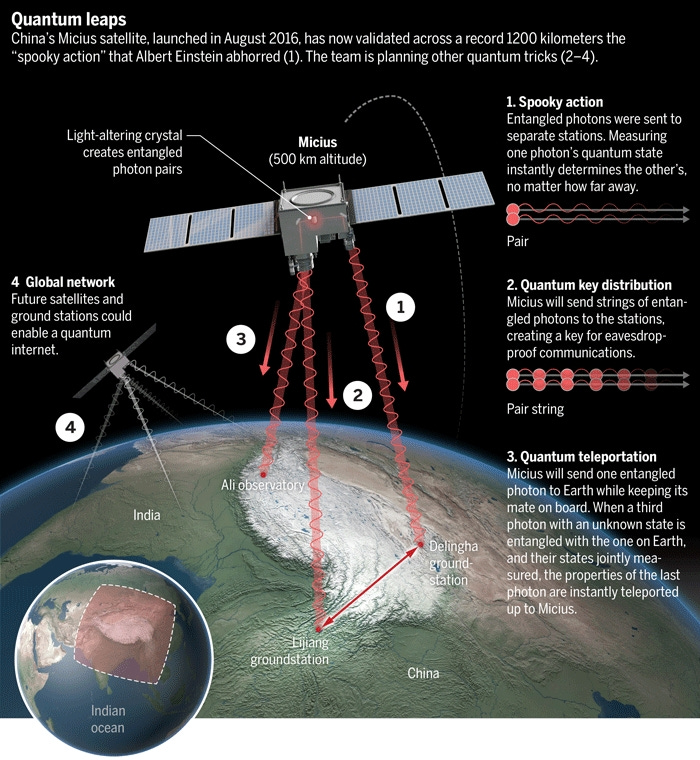Quantum Communication in Space
Navigating the Uncharted Realm of Secure Information Exchange
Wishing all our readers a 🎄 Merry Christmas! 🎄 May your holidays be as bright as the stars in the night sky, and may the spirit of space exploration inspire a new year filled with discovery and wonder. 🔭🌌🚀
Space Trivia:
Which Apollo mission did a Christmas Eve broadcast in 1968, while orbiting around the Moon?
A) Apollo 8
B) Apollo 9
C) Apollo 10
D) Apollo 11
Answers at the end of this article
Quantum communication is a cutting-edge field at the intersection of quantum physics and information technology. It is revolutionizing the way we think about secure communication in the space. Traditional communication methods (involving binary 0 and 1) are vulnerable to interception. But the principles of quantum mechanics offer a new frontier where information can be transmitted with unprecedented security.
Today, in this article, we'll delve into the foundations of quantum communication, explore its applications in space, and also discuss the potential implications for future space missions.
Understanding Quantum Communication
Quantum communication relies on the unique properties of quantum particles, such as photons. Unlike classical bits, which can exist in a state of either 0 or 1, quantum bits, or qubits, can exist in multiple states simultaneously due to the phenomenon known as superposition. This inherent uncertainty, paired with another quantum principle called entanglement, forms the basis for secure communication.
Entanglement involves linking two or more particles in a way that the state of one particle instantly influences the state of the others, regardless of the distance between them. This interconnectedness allows for the creation of cryptographic keys that change if an eavesdropper attempts to intercept the information. This is because the super-fragile quantum state “collapses” to either 1 or 0. This means a hacker can’t tamper with the qubits without leaving behind a telltale sign of the activity. Thus, providing a level of security that is theoretically unbreakable.
Applications in Space Communication
Quantum Key Distribution (QKD): QKD employs the principles of quantum entanglement to create secure cryptographic keys. These keys are transmitted between parties, and any attempt to intercept the keys would disrupt the entanglement, alerting the users to potential eavesdropping.
Quantum Teleportation: While not teleportation in the traditional sense, quantum teleportation involves transmitting the state of one particle to another instantaneously. This could revolutionize the transmission of information across vast distances in space.
Quantum Repeaters: Overcoming the challenge of quantum signal degradation over long distances, quantum repeaters use entanglement swapping to extend the range of quantum communication. This is crucial for space missions that involve communication across astronomical distances.
Challenges and Innovations
Environmental Factors: Quantum communication is sensitive to environmental conditions. Innovations in the development of robust quantum systems that can withstand the harsh conditions of space are essential.
Integration with Classical Systems: To realize the full potential of quantum communication, seamless integration with classical systems is required. This involves developing hybrid systems that can switch between quantum and classical modes of communication.
Quantum Communication in Recent
Space Missions
Quantum Experiments at Space Scale (QUESS) is a Chinese research project in the field of quantum physics. QUESS is a proof-of-concept mission designed to facilitate quantum optics experiments over long distances to allow the development of quantum encryption and quantum teleportation technology.
The launch of the Chinese satellite Micius in 2016 could have been viewed as merely a single addition to the 2,700-odd instruments already orbiting Earth. But it is the world’s first quantum communications satellite. Micius has successfully brought entanglement-based quantum cryptography to its original ground stations 1,200 km apart by sending simultaneous streams of entangled photons to the ground stations to establish a direct link between the two of them.
The satellite provided entangled photons as a convenient resource for the quantum cryptography and the two ground stations then used them according to their agreed protocol. None of the communication went through Micius (i.e behaved like a blind transmitter) providing the ground stations a robust and unbreakable cryptographic protection without the need to trust the satellite. Until now, this had never been done via satellite or at such great distances.
But QUESS itself has limited communication capabilities: it needs line-of-sight, and can only operate when not in sunlight.
Future Prospects
Envision a future where quantum communication forms the backbone of a quantum internet in space, allowing for secure communication between satellites, space stations, and even future interplanetary missions. As quantum technologies advance, the development of quantum networks becomes feasible. These networks could connect quantum computers and other quantum devices, creating a quantum internet. Such a quantum internet would enable secure communication, distributed quantum computing, and novel applications not possible with classical networks.
Conclusion
Quantum communication in space represents a paradigm shift in secure information exchange. As technology advances and quantum systems become more resilient, we stand at the cusp of an era where the secrets of the universe can be communicated with unprecedented security. The integration of quantum communication in ongoing and future space missions opens doors to possibilities that were once confined to the realm of science fiction.
Answer to Space Trivia: Apollo 8
The Apollo 8 mission holds a special place in space history as it marked the first time humans orbited the Moon. The mission took place in December 1968, and the astronauts aboard were Commander Frank Borman, Command Module Pilot James Lovell, and Lunar Module Pilot William Anders.
On Christmas Eve, December 24, 1968, while orbiting the Moon, the Apollo 8 astronauts delivered a live broadcast to Earth. This broadcast, known as the "Christmas Eve Broadcast," became one of the most-watched events in television history. The astronauts' messages of peace and hope resonated globally, making this mission a historic and memorable event in space exploration.





